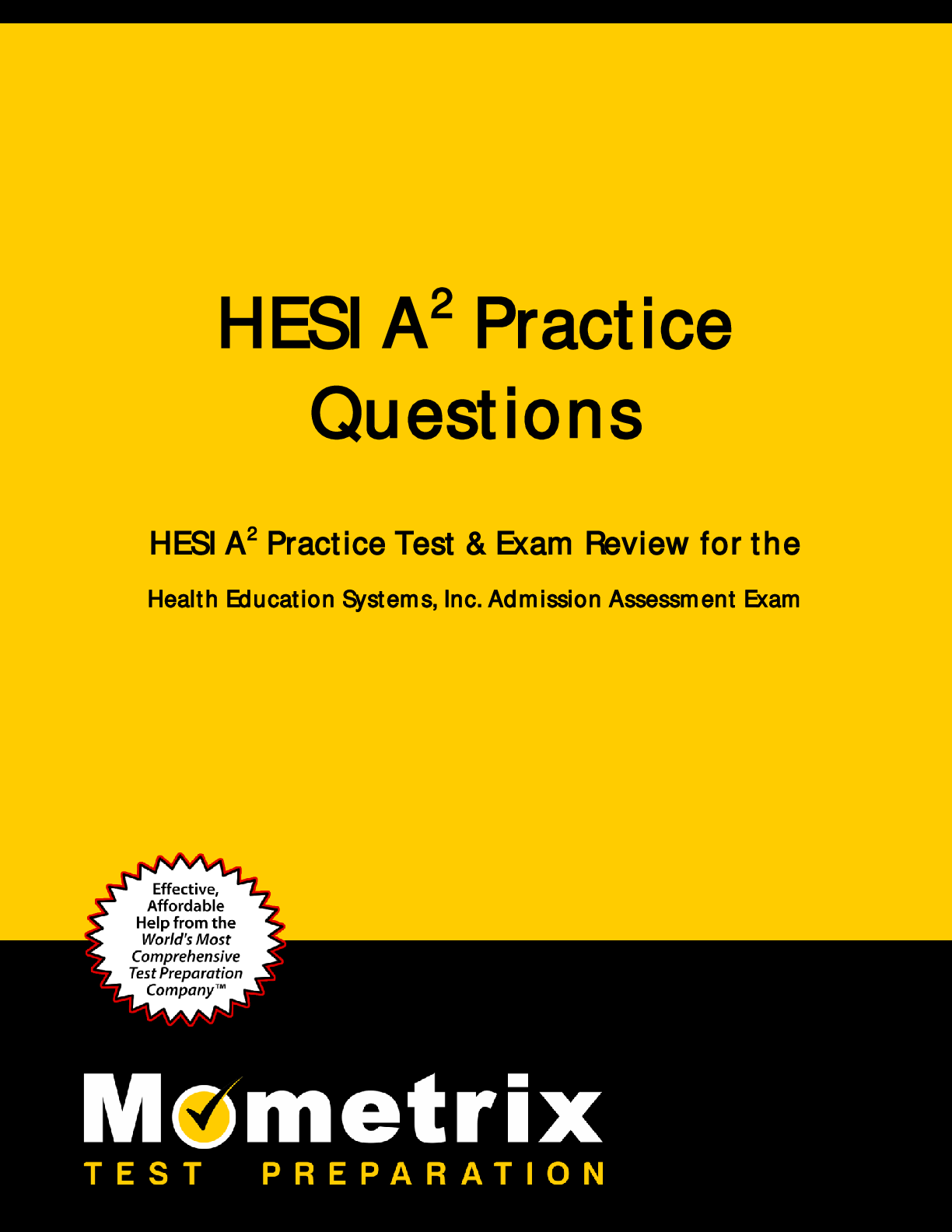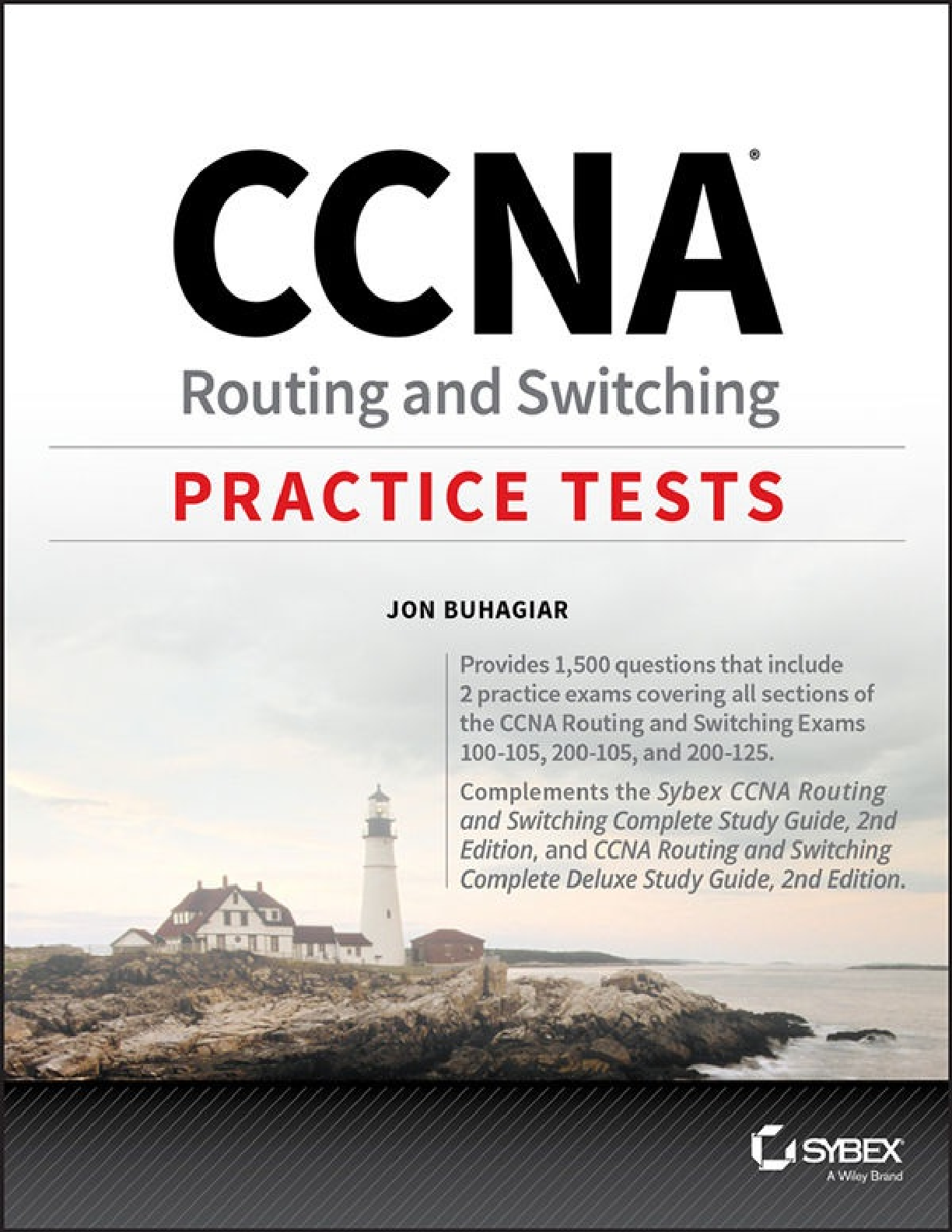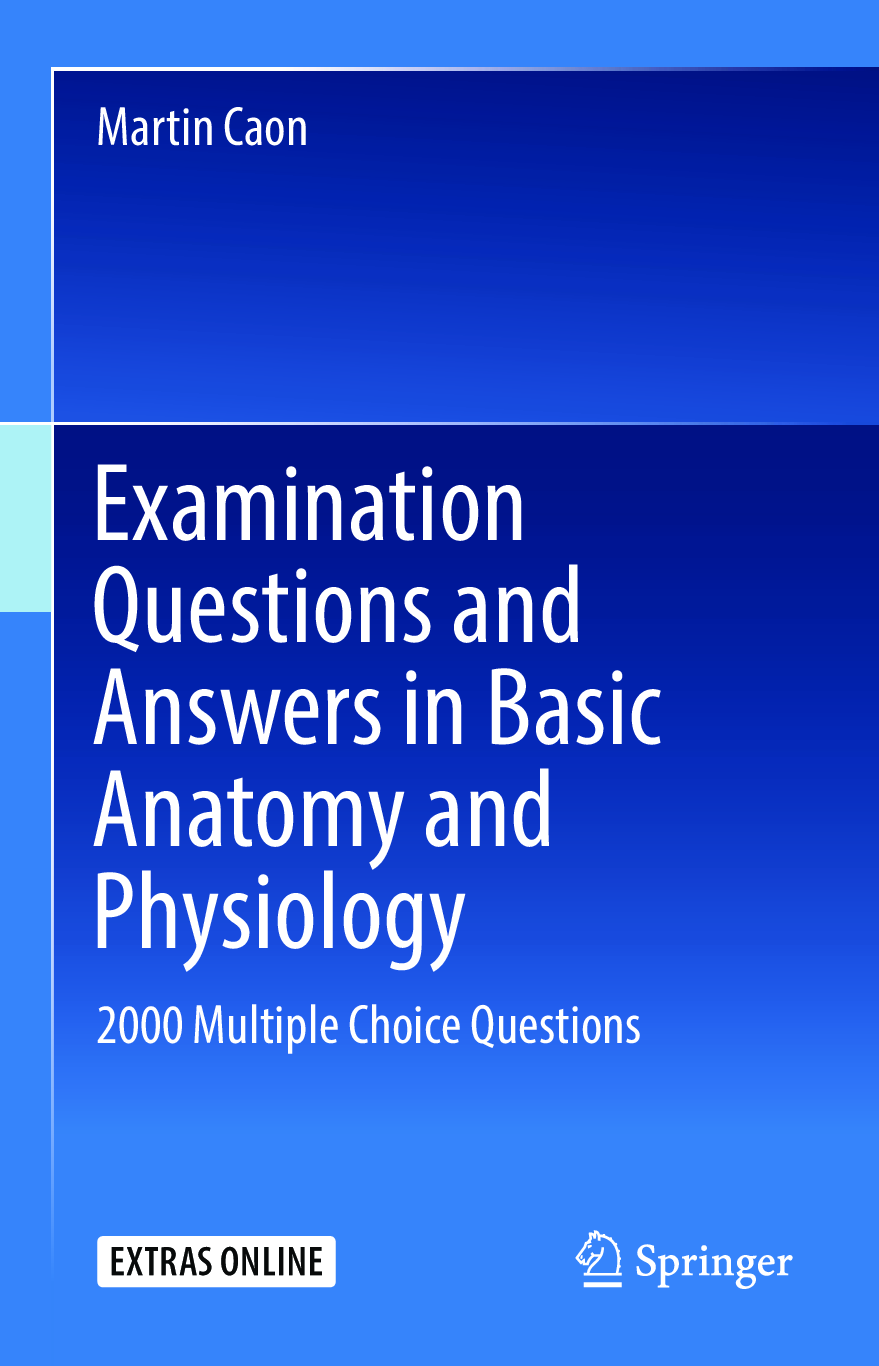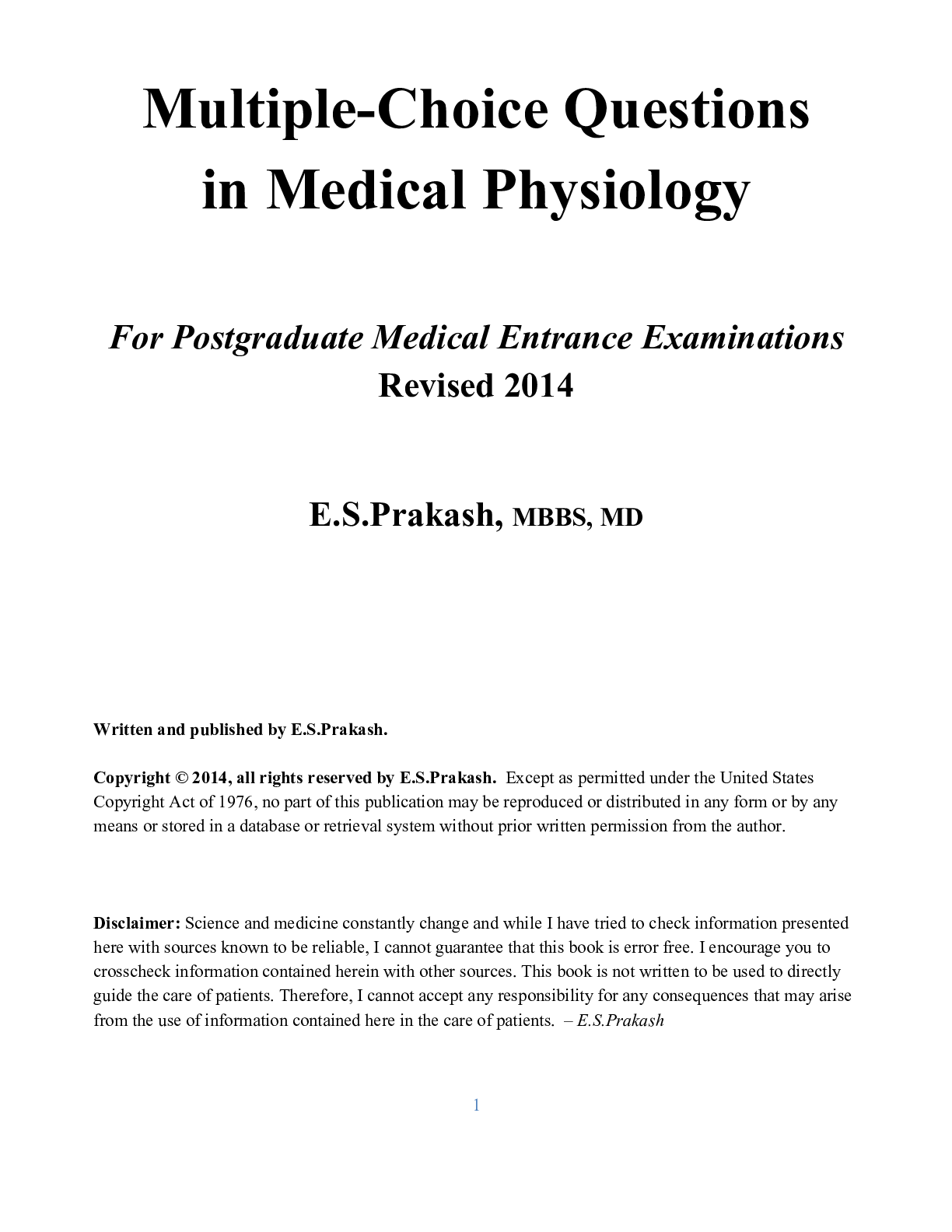*NURSING > QUESTIONS & ANSWERS > Short Answer Questions and MCQs in Anesthesia and Intensive Care (All)
Short Answer Questions and MCQs in Anesthesia and Intensive Care
Document Content and Description Below
Short Answer Questions and MCQs in Anesthesia and Intensive Care : Contents Preface Section 1 – Action plans 1. Air embolism 2. Alarming cyanosis 3. Bloody epidural 4. Dural tap 5. Maligna... nt hyperpyrexia 6. Pulmonary aspiration 7. Severe drug reactions 8. Systemic toxicity of local anaesthetics 9. Tricyclic overdose 10. Wheezing Multiple-choice questions Answers to multiple-choice questions ix 1 2 5 8 9 11 14 16 18 20 21 23 27 Section 2 – Anatomy 29 1. First rib 2. Anterior spinal artery 3. Blood supply of the heart 4. Femoral nerve 5. Internal jugular veins 6. Oesophagus 7. Subclavian vein 8. Diaphragm 9. Pleura 10. Arterial supply of brain 11. Brachial plexus 12. Innervation of the eye 13. Intercostal space 14. The axilla 15. The sympathetic trunk 16. The trachea Multiple-choice questions Answers to multiple-choice questions 30 33 35 37 41 43 45 46 48 50 53 57 61 63 67 70 72 75vi CONTENTS Section 3 – Cardiothoracic anaesthesia 1. Coronary artery bypass surgery 2. Problems in 24-hour period after CABG 3. Management in 24-hour period after CABG 4. Oesophagectomy 5. Physiology of one-lung ventilation (OLV) 6. One-lung ventilation: indications 7. One-lung ventilation: technique 8. One-lung ventilation: problems 9. Post-thoracotomy pain Multiple-choice questions Answers to multiple-choice questions 77 78 83 85 89 93 96 97 100 102 107 111 Section 4 – The intensive care unit (ICU) 113 1. Cardiac output 2. Cardiopulmonary resuscitation 3. Central venous catheter infections 4. Complications of total parenteral nutrition (TPN) 5. Enteral versus parenteral feeding 6. Assessment of nutritional status 7. Hypothermia 8. Trauma to chest 9. Transfer between hospitals 10. Metabolic requirements 11. Nitric oxide use 12. Positive end-expiratory pressure (PEEP) 13. Pulmonary oedema 14. Ventilatory support 15. Burns Multiple-choice questions Answers to multiple-choice questions 114 118 121 124 127 129 132 135 139 142 144 147 150 152 157 160 165 Section 5 – Neuroanaesthesia 1. Head injury 2. Intracranial pressure (ICP) measurement 3. Indications for referral of head injury 4. Spinal cord injury Multiple-choice questions Answers to multiple-choice questions 167 168 171 174 177 179 183 Section 6 – Obstetrics 185 186 188 190 192 1. 2. 3. 4. Caesarean section in pre-eclampsia Control of blood pressure in pre-eclampsia Control of pre-eclamptic convulsions Repeat caesarean sectionvii Contents 5. Prophylaxis for deep vein thrombosis (DVT) 6. Postdural puncture headache Multiple-choice questions Answers to multiple-choice questions 193 194 196 199 Section 7 – Paediatric anaesthesia 201 1. Latex allergy 2. Investigation of latex allergy 3. Paediatric pain 4. Premedicant drugs 5. Sevoflurane versus propofol 6. Tracheo-oesophageal fistula repair Multiple-choice questions Answers to multiple-choice questions 202 204 206 208 210 212 215 218 Section 8 – Pain management 219 1. Measurement of pain 2. Patient-controlled analgesia (PCA) 3. Safety of PCA 4. NSAIDs 5. Complex regional pain syndrome 6. Neurogenic pain 7. Stellate ganglion block 8. Postoperative pain 9. The postanaesthetic visit Multiple-choice questions Answers to multiple-choice questions 220 223 225 228 232 234 237 239 241 244 246 Section 9 – Physics 247 1. Serum oxygen measurement 2. Pulse oximetry 3. Carbon dioxide measurement 4. Invasive blood pressure measurement 5. Temperature measurement 6. Perioperative heat loss 7. Low-flow anaesthesia 8. Swan–Ganz catheter Multiple-choice questions Answers to multiple-choice questions 248 251 253 256 258 261 263 266 270 275 Section 10 – Special clinical problems 277 1. 2. 3. 4. 278 281 284 285 Non-cardiac surgery after heart transplant Septoplasty Monitoring in magnetic resonance imaging (MRI) Subtotal thyroidectomyviii CONTENTS 5. Dental anaesthesia 6. Day-case anaesthesia 7. Thromboembolism prophylaxis 8. Patient with pacemaker 9. Infection risk 10. Atrial fibrillation Multiple-choice questions Answers to multiple-choice questions 291 293 294 296 298 300 301 306 Section 11 – Study design and statistics 1. Meta-analysis 2. Patient information sheet 3. Evidence-based medicine 4. Study design for new antiemetic drug 5. Data interpretation Multiple-choice questions Answers to multiple-choice questions 307 308 310 312 313 315 316 318 Section 12 – Applied pharmacology 319 1. Propofol versus thiopentone 2. Therapeutic uses of magnesium 3. Use of nitrous oxide (N 2 0) 4. Anaesthetic implications of substance-abusing patients 5. Drugs used to induce hypotension 6. Postoperative nausea and vomiting (PONV) Multiple-choice questions Answers to multiple-choice questions 320 322 323 324 326 328 330 333 [Show More]
Last updated: 1 year ago
Preview 1 out of 353 pages
Instant download
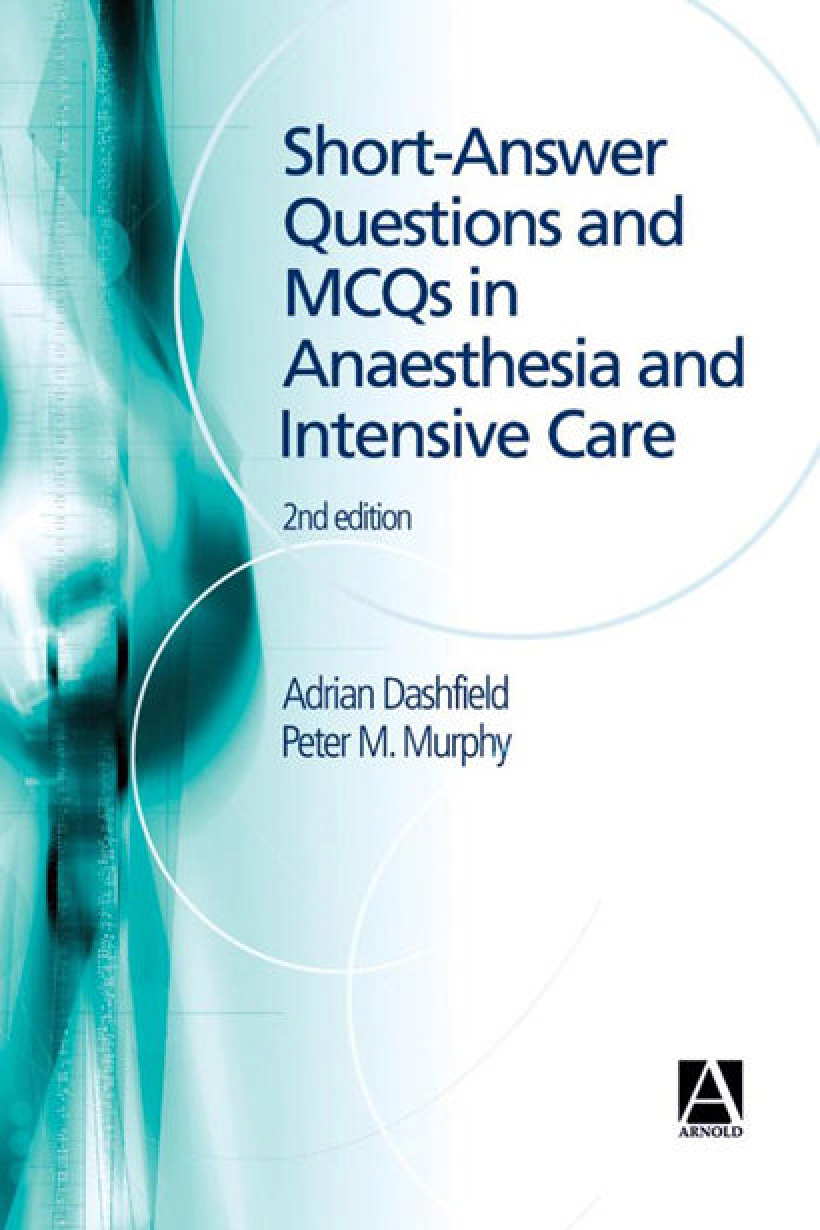
Buy this document to get the full access instantly
Instant Download Access after purchase
Add to cartInstant download
Reviews( 0 )
Document information
Connected school, study & course
About the document
Uploaded On
Apr 19, 2022
Number of pages
353
Written in
Additional information
This document has been written for:
Uploaded
Apr 19, 2022
Downloads
0
Views
69


